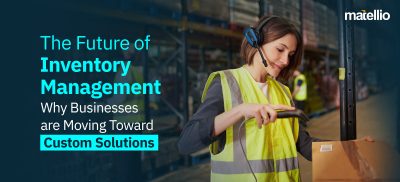
Have you ever asked where did all those dashing attires you wear originate from? And What about the handset devices you keep using for browsing the internet, where did they come from? Besides the stores you visit or the online sites you navigate, there is a whole different chain of interlinked components that does the job of fetching those goods for you. This chain of interconnected elements is known as Supply Chain.
What is Supply Chain Management?
The flow of goods, services, and information from one point to another is the basic definition for the supply chain management. It involves movement and storage of raw materials, equipment, plus the full-fledged finished product from source to destination. The whole process is a result of integrated planning and the perfect execution of the different processes. Within SCM, a supply chain is a network of organizations, individual entities, resources, and technologies that enact together for product manufacturing.
The real growth of a supply chain is observed when the raw material from the supplier is processed and finally delivered as a finished product to the consumer. The perfect implementation results in higher revenues, improved quality, reduced overhead costs, and fraud.
Challenges in Logistics and Supply Chain Industry
- Many businesses within the supply chain and logistics hesitate on sharing data related to their process. This, in return, creates a lack of visibility in a supply chain.
- Most of the present logistics practices make it challenging to view and track components while advancing through the supply chain.
- A lot of stuff in the world of logistics and supply chain is jotted on paper documents. The digital systems that exist are either outdated or need a transformation. These obsolete systems are slow, expensive, and even highly prone to error.
- Also, the management of the supply chain is itself a tedious task even for not so big companies as well. The interconnectivity gradually gets inefficient as the organization grows.
The above-mentioned issues contribute to ineffective decisive power with the people involved as they don’t have proper data at their disposal. This is a fragmented approach in the logistics and supply chain industry that leads to compounding errors and excessive money loss. So, as to combat these problems, advanced technologies like Blockchain have been introduced in the game.
What is Blockchain Technology?
Blockchain is a distributed, digital ledger system which can be utilized for contracts, exchanges, tracking, and for making payments. The system is designed for verifying, recording, and validating peer-to-peer transactions in an encrypted and secure environment. Blockchain development was made popular by cryptocurrency mining activities in which the transactions were recorded with the help of peers. Every transaction is recorded in a series of blocks that are chained together in a network called nodes. The information is encrypted, validated, and distributed to the linked nodes. All the data saved in the blockchain system is hard to tamper, and this is what gives the Blockchain an upper hand in the existing supply chains.
How can Blockchain help?
1. Permanent Records
When compared to the conventional, centralized systems, Blockchain based systems offers uniqueness. It is due to its ability of recording verified transactions from different nodes in the network. When organization A receives an order from the organization B, Blockchain automatically invoices organization A less any damaged items. When organization A pays the invoice, a transaction is recorded on a block of the Blockchain. This way, the complete accounting system is automated, and even the financial statements are generated mechanically. Both stakeholders and investors and trust the accuracy of these statements because of the increased transparency.
2. Shipments & Production Tracking
As products move through the supply chain, companies at all levels of the supply chain need to be aware of their goods’ real-time location. They are also supposed to know the present stage of production and their accurate date of arrival. The supply chain management powered by Blockchain allows for better product traceability, which enables the companies with an optimized production approach. With this cutting edge technology, late shipments or shortages can also be tracked well in advance. Post tracking, the corrective measures can be implemented in the system as well.
Read More: Discover how AI inventory management software is transforming inventory operations by automating stock tracking, reducing waste, and optimizing supply chains for maximum profitability.
3. Fast-Tracking Custom Inspection Process
Custom Enforcement Officers are expected to ensure that appropriate tariffs have been paid in addition to preventing the entry of illegal goods in the country. Traditionally, the process of customs was extensive paperwork and involved thorough inspections. But with the introduction of Blockchain Technology, the updated system can fast-tracks the customs inspection process by giving the government an immutable record of contents. It provides proof that the involved parties have paid proper tariffs.
4. Verifying Product Source
Both consumers and customs want to ascertain the source of a particular product. Customs Enforcement officers wish to prevent the entry of any potentially harmful products, for example, exotic plants in the country, while the consumers have a concern with the products’ origin. Take this instance, most of the consumers question the way chickens have been raised and shall only purchase cage-free goods (eggs to be precise).
5. Fraud Detection
Owing to the raised product traceability standards by Blockchain, supply chain frauds are reduced massively. From blockchain based-locks to precise tracking, higher transparency builds an accountable supply chain management system. The companies utilizing the same can precisely pinpoint the person with access to information, and who has tampered it.
The Verdict
Blockchain has the ability to transform the logistics and supply chain industry. It disrupts the way goods are generated, marketed, purchased, and eventually consumed. It can automate many administrative and clerical tasks in addition to assisting others. Also, when combined with other cutting edge technologies like AI/ML and robotics, Blockchain can produce solutions that would not only improve the efficiency of operations but also reduce overhead costs. A lot is still there to explore, but for now, we can say that these systems have a lot more to offer. Got something to share? Feel free to sound off in the comment box below. Till then, Happy Exploring!



